For a variety of reasons, the 1970s remain a “Golden Age.” This decade saw the release of both vinyl and cassette records, as well as disco music and a slew of new horror films.
With historic events like The Beatles’ breakup, Elvis Presley’s death, governmental scandals, and street protests, novelist Tom Wolfe appropriately dubbed the period the ‘Me Decade,’ owing to the significant transition in popular thinking from communitarianism to individuality.
Despite the fact that American horror films dominated the decade, films from all over the world introduced a modern-day influence, demonstrating to the world that horror films can be creative.
The Texas Chainsaw Massacre (1974), The Rocky Horror Picture Show (1975), The Amityville Horror (1979), the Halloween and Friday the 13th franchises, and the beginnings of many years that would respect Stephen King as the one real pioneer of horror are at the top of this list.
Insanity, children possessed or affected by the Devil, supernatural forces, and telepathy became popular themes that piqued the interest of horror aficionados. Most serial killings began in the early 1970s and lasted until the late 1990s, according to Peter Vronsky, a criminal justice lawyer. This heavily impacted the films that released in the time being as slasher horror was a subgenre that gained immense popularity.
Despite people’s peaked interest in the genre during this time, there were some gems that went unnoticed and today we will be recalling some of those forgotten horror films that made the 70s the thrill that they were.
The Creeping Flesh (1973)
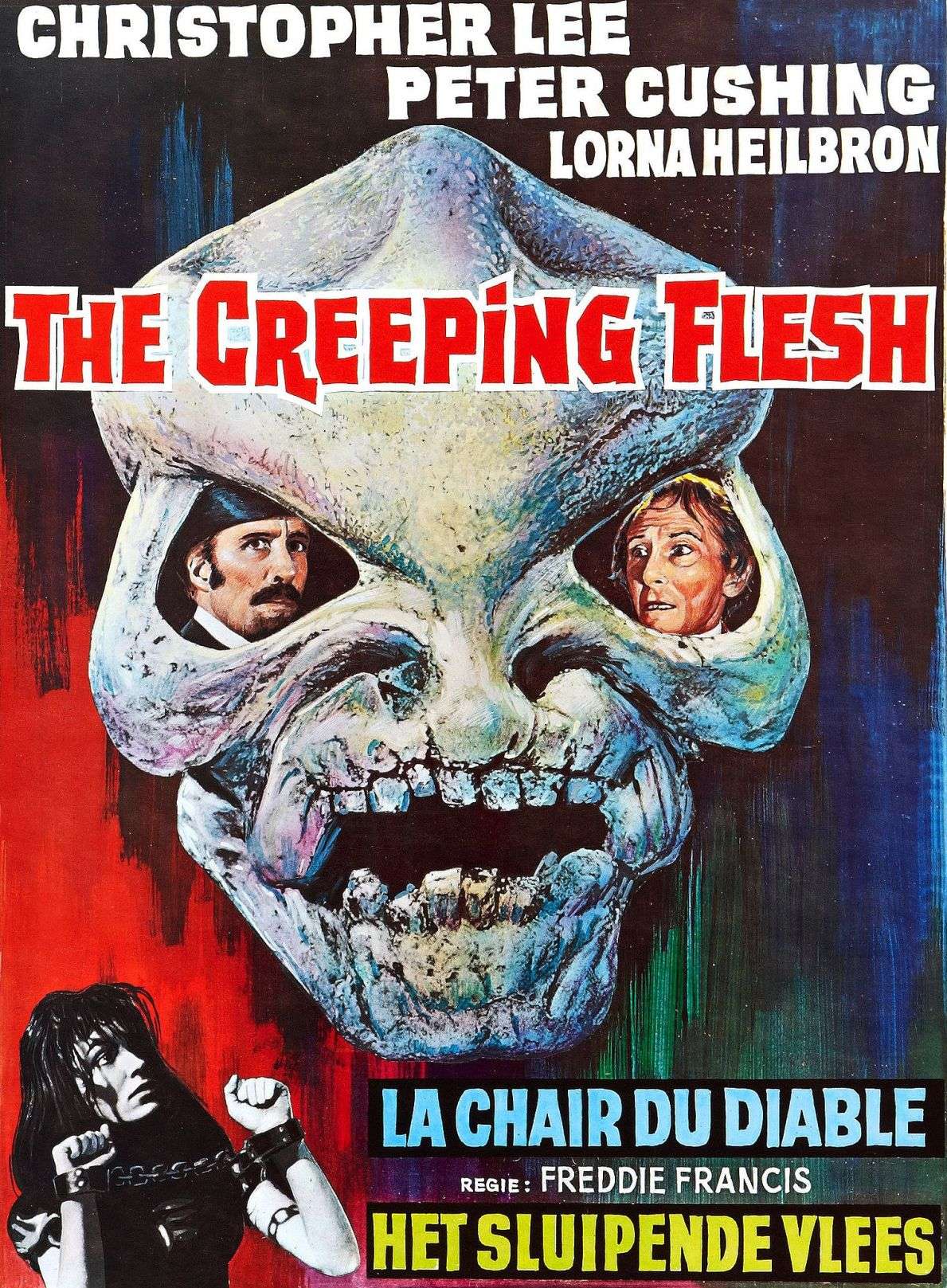
The horror in the United Kingdom The Creeping Flesh, directed by Freddie Francis, was a superb parody on societal rules that exposed Victorian England’s fixation with prudence. Professor Emmanuel Hildern tells a young doctor about his new finding in the film, which is primarily told through flashbacks.
He feels he has discovered a very genuine type of evil and that he may have unintentionally unleashed it on the world far sooner than it should have been. As he speaks about his travel to New Guinea in 1894, he recounts the events that led up to this.
He discovered a humanoid skeleton there, which he brought home to study, earning him a Richer Prize. Soon, he found out that ancient people had theories about the skeleton developing into an organism through contact with rain. To test this, he dipped the skeleton’s finger in water and to his surprise, saw it grow flesh.
However, the discovery was premature: the ancient ones had hoped that the phenomenon would be found many years later, when humanity would have the science and means to fight the evil. To make things right, Hildern created a serum as an antidote to the evil and when tests on a monkey showed positive results, he injectedit into his daughter Penelope .
He did so in a panic, worried that she may have inherited her insanity. Penelope runs off into the city and begins to wreak havoc all around, killing people, until she was restrained and brought into an asylum run by Hildern’s brother James.
Learning of his brother’s serum, James steals it along with the skeleton, hoping that he himself might win the Richer Prize. On the way to the asylum, the skeleton is exposed to rain and comes to life. The film then shifts its focus back to the present, where Hildernisaccounting his story to the young doctor.
It turns out that the laboratory Hildern was recounting his narrative from is actually a cell in James’ sanatorium, and the doctors and nurses assume he is claiming he is related to James and Penelope because of his insanity.
The camera moves to Hildern’s hand as James tells his employees that Hildern arrived at the asylum on the same day he won the Richer Prize, and we notice that one of his fingers—the same one he hacked off the skeleton—is missing. The film comes to a close here, enabling the audience to judge for themselves what the reality was.
It is possible that Hildern was telling the truth and that his brother used him to conduct the same experiments Hildern had performed on the skeleton. But it is also a possibility that Hildern himself had become clinically insane, meaning his account cannot be trusted.
Many have employed an unreliable narrator over the years, since the concept was first introduced by poet Edgar Allan Poe . In a way, the untrustworthy storyteller device helps the readers or viewers feel like they are also a part of the tale, as they get to choose the ending for themselves. Given that this film released all the way back in 1973, it was way ahead of its time.
Deranged (1974)
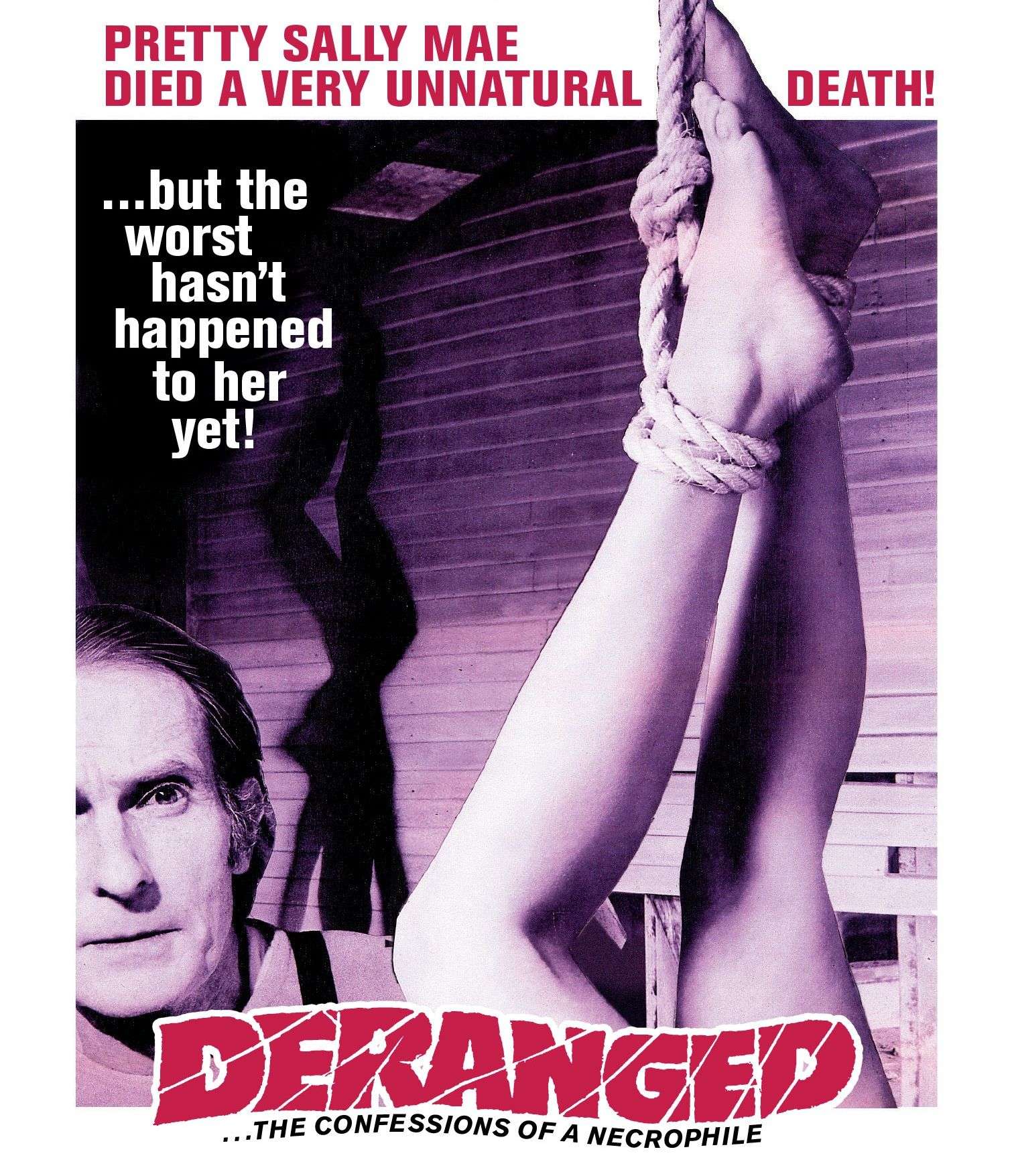
Deranged, directed by Alan Ormsby, is a psychological horror film based on the life of legendary serial killer Ed Gein. Gein was infamous for grabbing bodies from graveyards in order to gather bones and skin, as well as storing mementos of his victims after they were murdered.
Deranged, on the other hand, tackles themes of necrophilia, which Gein was not known for, and so the plot is only loosely based on the life of the notorious body snatcher. The plot centres around Ezra, a middle-aged man raised on a farm by his religiously zealous mother.
Given her narrow-minded view of the world, she raises Ezra to hate women and eventually he grows up to become a misogynist. After his mother passes away from an illness, Ezra goes insane. He hallucinates that his mother is asking him to exhume her. He obliges, digginh up her grave and pulling out her corpse, and proceeding to put it together using fish skin and wax.
When Ezra meets psychic Maureen Shelby and murders her as the two were getting intimate, a switch is flicked in his mind, and he then goes on a serial killing rampage. One of his prominent victims, Mary, is tricked into coming home Ezra when he fools her into thinking he can give her a spare tyre for her broken down car.
On entering, she is terrified to find many corpses, including Ezra’s mother’s body. As he attempts to molest her, she is able to trick him into freeing her and even though she manages to smash a bottle on his head, he beats her to death with a human femur bone.
Ezra next speaks with Mary’s friend Harlon and finds his next victim in Sally, the girlfriend of Harlon’s nephew Brad. Later, Ezra shows up at Sally’s workplace to shoot her.
Sally manages to survive as the bullet only grazes her but is kidnapped by Ezra. As she frees herself and runs into the woods on foot, she does not have much luck as Ezra finds her and shoots her properly this time.
Harlon and Brad manage to get a hold of the sheriff and track Ezra down just as he was skinning Sally in his barn and laughing over a bowl of blood. “A few days later, a gang of villagers, purportedly led by Harlon Kootz, under cover of night, burned the Cobb farm… to the ground,” says a voice-over at the close of the video.
As the line becomes quieter, the audience has a chance to take in the absurdity of the film. Ormsby drew inspiration from the most gruesome scenes in Alfred Hitchcock’s Psycho, as well as real-life serial killer Ed Gein and the interesting concept of necrophilia, to create this rollercoaster ride of a film that deserved a lot more attention.
Stranger in Our House
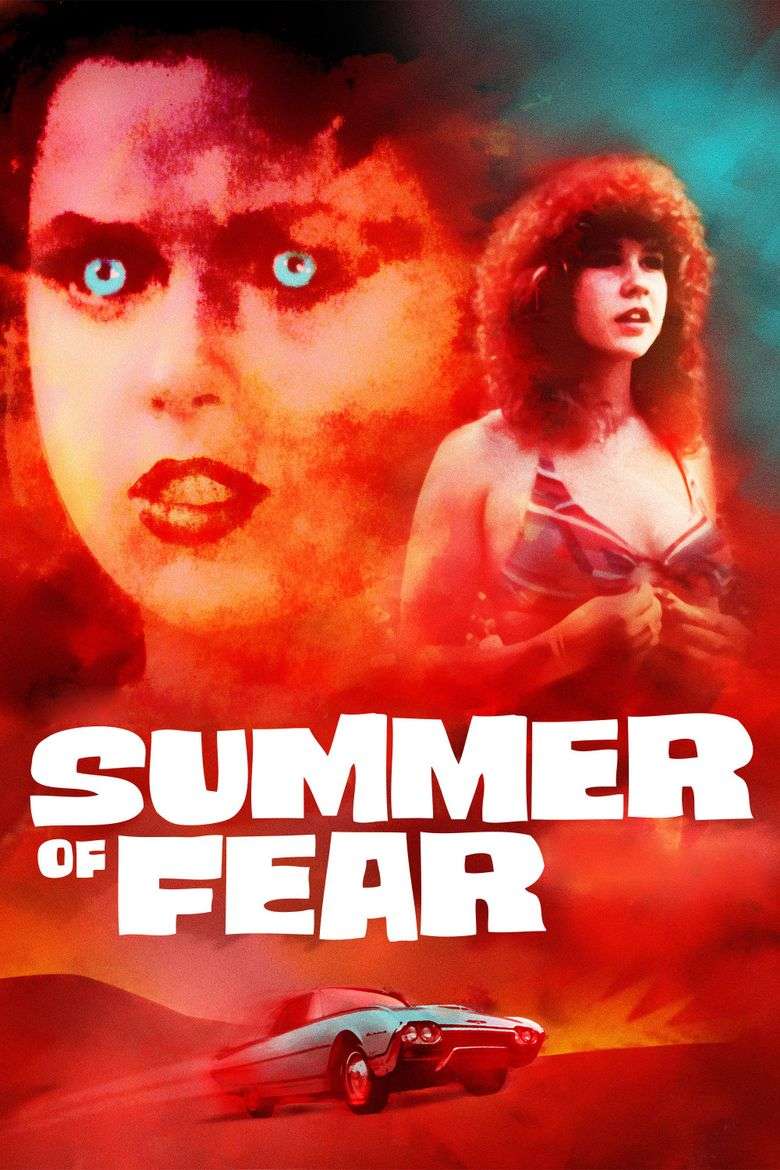
Stranger in Our House, directed by Wes Craven, was based on Lois Duncan’s novel Summer of Fear. After her parents are murdered in a car accident on the East Coast, Julia moves in with her aunt, uncle, and their two children, Rachel and Bobby.
Julia’s accent is uncharacteristic of the East Coast, and she gradually becomes a more sophisticated demeanour as she spends more time with the new family, abandoning her painfully bashful persona.
She seemed to be more interested in Rachel, or rather, all of her possessions and those close to her. Not only does Julia manage to attract the attention of Rachel’s boyfriend, but she even becomes close friends with her best friend Carolyn.
After Rachel’s horse breaks its leg and has to be euthanized, she goes fishing into Julia’s room where she finds evidence pointing to the fact that Julia may have been performing acts of black magic – a fact confirmed by Rachel’s neighbour Jarvis.
As Rachel begins her research on occult, she starts to believe that Julia may not be who she claims to be. All this while, Julia continues to cause pain for Rachel’s family, planning for her mother to meet with an automobile accident, and even going so far as to use sexual advances on Rachel’s father.
As Rachel’s suspicions about Julia being a witch are confirmed by developing photos she took of her earlier, she and Juliabecome entangled in a cat and mouse chase where Rachel tries to escape the clutches of the witch.
Rachel flees the house and jumps into a car with her boyfriend to avoid her mother’s car accident, while Julia pursues them in another vehicle. While Julia’s car slides off a cliff and explodes, they manage to elude her and save the mother.
Rachel and her family discover after some investigation that the lady living with them was not Julia at all, but her nanny Sarah, who had survived the accident that killed the real Julia and her parents. The film ends as we see another family welcoming a nanny into their home and it is none other than Sarah, posing once again as Julia.
This film stands out in comparison to other entriesin Craven’s large filmography. He has rightfully earned his place as a pioneer of the horror genre, though the subgenre he specializes in is slasher films. Stranger in Our House flirts with the suspense subgenre, and while this isn’t Craven’s usual fare, he demonstrates his versatility.
The film reminds me of the 2015 biblical horror film The Blackcoat’s Daughter, starring Kiernan Shipka and Emma Roberts, who play Satan’s daughter while claiming to be someone else. Both the films have heavy themes exploring witchcraft and the occult, making them intriguing to sit through and an interesting watch, to say the least.
Sisters (1972)
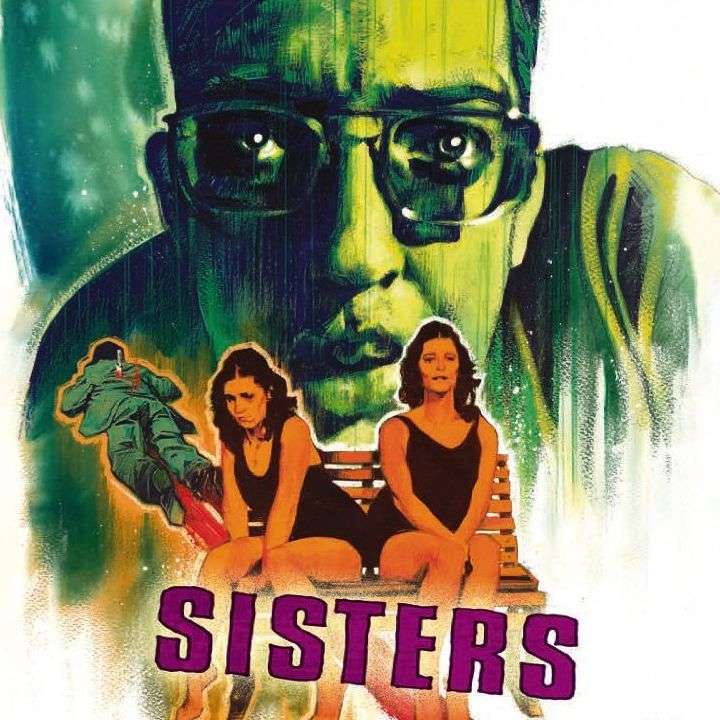
This psychological thriller, directed by Brian de Palma (0.19) and starring Margot Kidder, Jennifer Salt, and Charles Durning, was originally released in the UK as Blood Sisters. The film was inspired on Masha and Dasha, famous Russian twins who were conjoined at the pelvis and stolen from their mother at birth to be investigated by experts.
The picture presented itself as a terrific watch, but due to the cinematography’s overwhelming Alfred Hitchcock inspirations, it nearly feels like a tribute to the Psycho filmmaker. Palma has used similar composition styles in his famous film Carrie and even collaborated with Bernard Hermann who worked with Hitchcock frequently, to compose the music of Sisters.
The story follows Danielle, a model who brings home a man after a date. While out, she is followed by her ex-husband Emil as he keeps a close eye on both Danielle and her date Phil. After finding out that her twin sister Dominique is there to wish her a happy birthday, Phil steps out to buy them a cake and on returning, is brutally stabbed to death by Dominique.
After the murder, Emil and Danielle try their best to cover up the scene so that Dominique does not get caught. However, a reporter that lives across them, Grace, watches the whole thing unfold in horror and contacts the police for help.
Seeing as how she has previously written reports exposing police brutality, and taking into account that Phil was a black man, the police do not take Grace seriously at all. On reaching Danielle’s apartment, all evidence has been wiped out,leaving Grace determined to investigate the murder herself.
One day, as Grace follows Danielle and Emil into a mental institution, she gets caught and hypnotized by Emil to believe that “there is no body because there was no murder”. Following this, during a bizarre dream that edges on reality, Grace finds out the truth about the secret that Emil and Danielle are willing to pay any price possible to protect.
Despite being conjoined twins, Danielle and Dominique have always had radically different personalities, with the latter being aggressive, irritable, and even requiring psychiatric assistance.
Dominique stabbed Danielle in the stomach after she became pregnant with Emil’s child, resulting in a miscarriage. Following this, Emil devised a surgical procedure to separate the twins, but it resulted in Dominique’s death.
Unable to cope with the tragic loss of her beloved sister, Danielle developed a personality disorder wherein she assumes the identity of Dominique each time Danielle is involved with someone sexually, and ends up killing them.
Danielle then has no memory of what she has done and goes on to clean up her “sister’s” mess. Emil kisses Danielle to bring out Dominique, and she ends up killing him in front of Grace, who is half conscious.
When she wakes up, she sees Danielle mourning over Emil, not having any memory of what she had done. Later, Grace is questioned by a detective where she continues to chant “there is no body because there was no murder”.
The huge reveal of Dominique’s true identity transports us to the 1960 film Psycho, in which the iconic Norman Bates assumes the guise of his mother in order to murder anyone with whom he has sexual affections. Psycho and Sisters both take on the big themes of psychological terror, embracing everything that would make Sigmund Freud happy.
Willard (1971)

Willard is a horror movie directed by Daniel Mann and based on Stephen Gilbert’s novel Ratman’s Notebooks. Despite its box office success at the time of its release, this picture is included on this list of overlooked horror films from the 1970s because it is not as well remembered today as it should be.
Willard Stiles, a loner and social misfit who lives with his irritable mother Henrietta, is at the centre of the storey. Willard takes pity on the rats in the house on his 27th birthday after his mother requests him to get rid of them.
Instead of killing them as he was intended to, he ends up befriending them. At work, his boss Al continues to harass him on a daily basis, and pays Willard less than he has been working for.
When Al pressures Willard into selling him his house, Willard crashes one of his boss’ parties with his rats and lets them loose on the food. Meanwhile, he learns that his mother has passed away, leaving the mortgaged house and debts behind for Willard to take care of.
With his rat collection growing steadily, Willard slowly starts to run out of money and food for them and so he breaks into the house of one of Al’s friends and steals a large sum of money.
The very next day, Al spots one of the mice in the office and kills it. As if it was not devastating enough for Willard, as a last resort to get him to sell his house, Al fires Willard as well.
When Willard shows up at the office with his hoard of rats to confront Al, a freak accident causes the boss to fall out of a window. Willard is scared when he sees the rats consuming Al’s body and plans to drown them in a pit.
Willard discovers the rats he tried to drown have escaped and are scheming to attack him while eating dinner with a woman in his home that night. The evening devolves into a cat-and-mouse game, with Willard as the mouse and the rats, ironically, as the cats.
Willard is unable to fight off such a large number of rats, and he is eventually devoured whole by them as they gnaw through him. In a strange ending, we see one of the rats breaking the fourth wall and staring blankly at the audience as if trying to make a statement.
The film made its mark because of how it managed to make a regular house pest so horrifying. People see rats every now and then, if not in their homes then elsewhere, but this film took those furry creatures and made them into something so terrifying, it would make the audience keep a fearful eye out for the animals.
It almost feels like the film is a sinister take on the children’s story The Pied Piper and the Rats. In that story, we see the Piper’s mistreatment at the hands of the townspeople after he hypnotises the rats away from them.
He chooses to do the same to their offspring as a punishment for the town. But, as we watch Willard, we can’t help but imagine what it would be like if the rats turned on the Pied Piper himself.
Vampyres (1974)
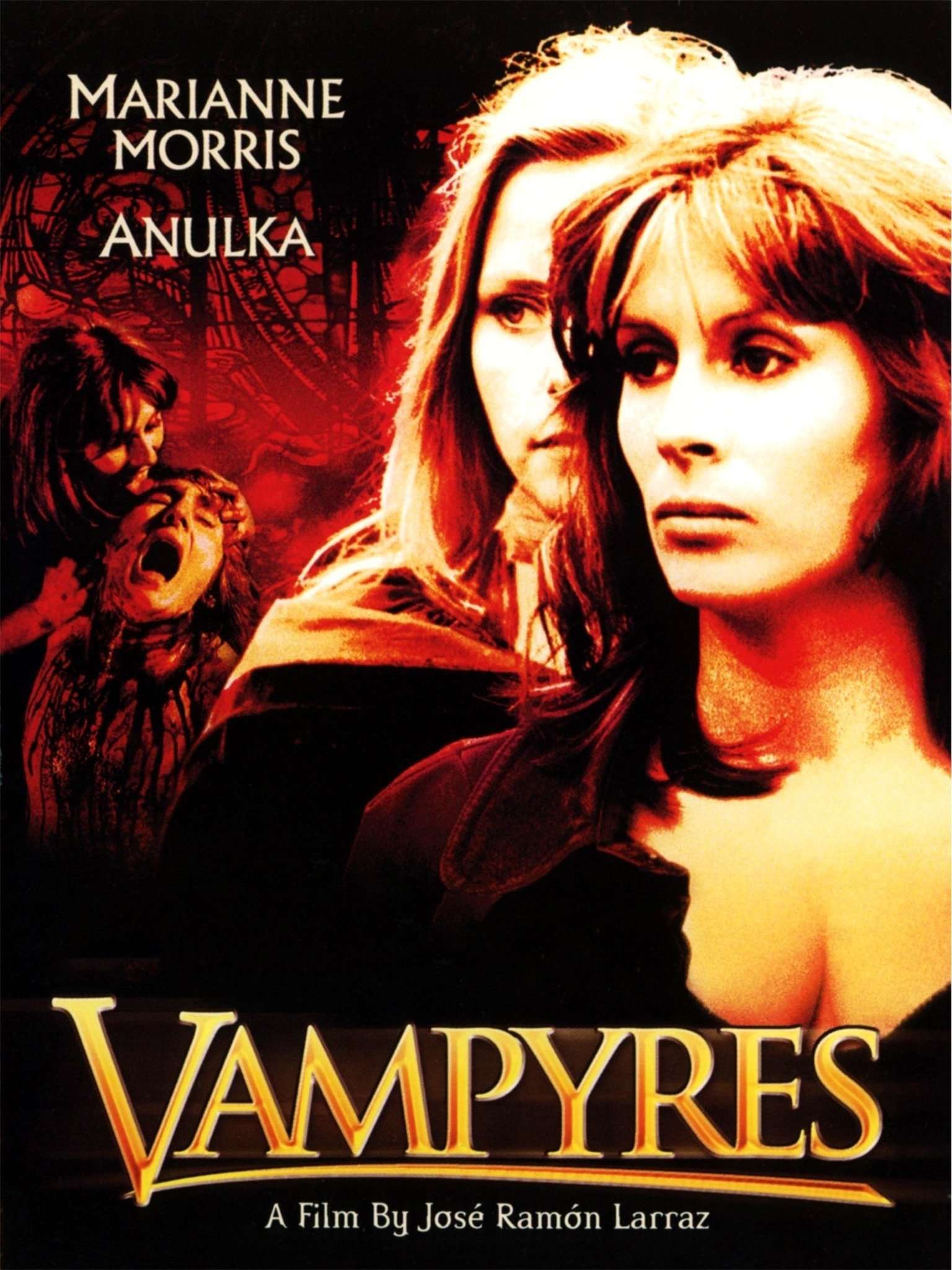
José Ramón Larraz directed this horror erotica, which received some reaction for how openly it addressed themes of violence, bisexuality, lesbianism, and sex. The same issues, however, are also the reason for the film’s current cult status.
The story follows a couple named John and Harriet as they camp out in their caravan in the middle of an English estate’s woods. Harriet claims to have seen various feminine figures while she is there, but John dismisses her claims, assuming she is simply frightened by being in the dark, murky woods.
The figures that Harriet sees are Fran and Miriam, two vampire lovers that live in a house on the very same estate. One day, a hitchhiker named Ted is lured into their house by Fran where they indulge in sexual acts.
When Ted awakes, Fran is nowhere to be found and he stumbles upon John and Harriet, who offer him some coffee in their caravan. Miriam, too, lures in another man named Rupert the next day, though she kills him as soon as she is done having sex with him. Miriam advises Fran to do the same with Ted as she does not want her to get too attached to her prey.
Fran obliges and the two vampires feed on Ted till he is left half dead in their house. In his anaemic state, Ted hears Fran and Miriam bring home another suitor,and he uses this opportunity to escape to John and Harriet’s caravan.
This move proves extremely futile as Fran and Miriam catch up to him and murder the couple, though Ted is able to get away. The film ends when Ted is found by a realtor the next morning, who believes him to be a drunkard.
The realtor then goes on to show Fran and Miriam’s house to an elderly couple and tells them the property has been hard to sell because of its reputation for being haunted by the ghosts of two women.
Vampyres’ success was largely due to the filmmaker’s bold choices and actresses who did not shy away from embracing sensuality on screen, despite being a standard vampire film with little novelty in its plot.
This worked particularly well because the decade in which the film was released was considered as a period of female freedom, with a focus on body acceptance.
Fascination (1979)

The French horror film Fascination, directed by Jean (0.16 to 0.17) Rollin, follows the story of a robber named Marc who flees his fellow thieves and seeks refuge in a nearby chateau.
While there, he meets two women, Eva and Elizabeth, who look to be in a relationship but are depicted as bisexual since they have a strong attraction to Marc. The criminals searching for Marc come at the chateau after Eva sleeps with him, and she hands them the gold he stole.
Eva is outraged when one of the thieves’ wives takes her clothes away, and she seduces her husband for vengeance. Eva then murders her husband and wife, as well as two more robbers in the stable.
Later that night, a marchioness arrives along with her female servants, leaving Marc as the only male subject to all that female attention. When he finds out that this is all a ruse to drain his blood and drink it as part of a ritual, Marc is aided by Elizabeth and the two escape the chateau.
When Eva tries to stop them, Elizabeth shoots her, claiming she was angry at Eva for sleeping with Marc. The marchioness and her servants then end up drinking Eva’s blood instead.
Marc and Elizabeth continue to walk through the woods, and he confesses his feelings for her, though she shoots him, saying she does not feel the same. The film comes to an end as Elizabeth and the marchioness walk off into the sunrise, hand in hand.
Some may argue that the film is not horror, rather a love story. But using that ambiguity, we felt it important to include this film in our list just so we could talk about its brilliant plot.
The film’s sexual intensity is equally distributed throughout, making it appear romantic rather than pornographic. The icing on the cake would have been if the women were vampires, although I suppose ritualistic blood drinking by humans makes sense as well.
The Legend of Hell House (1973)
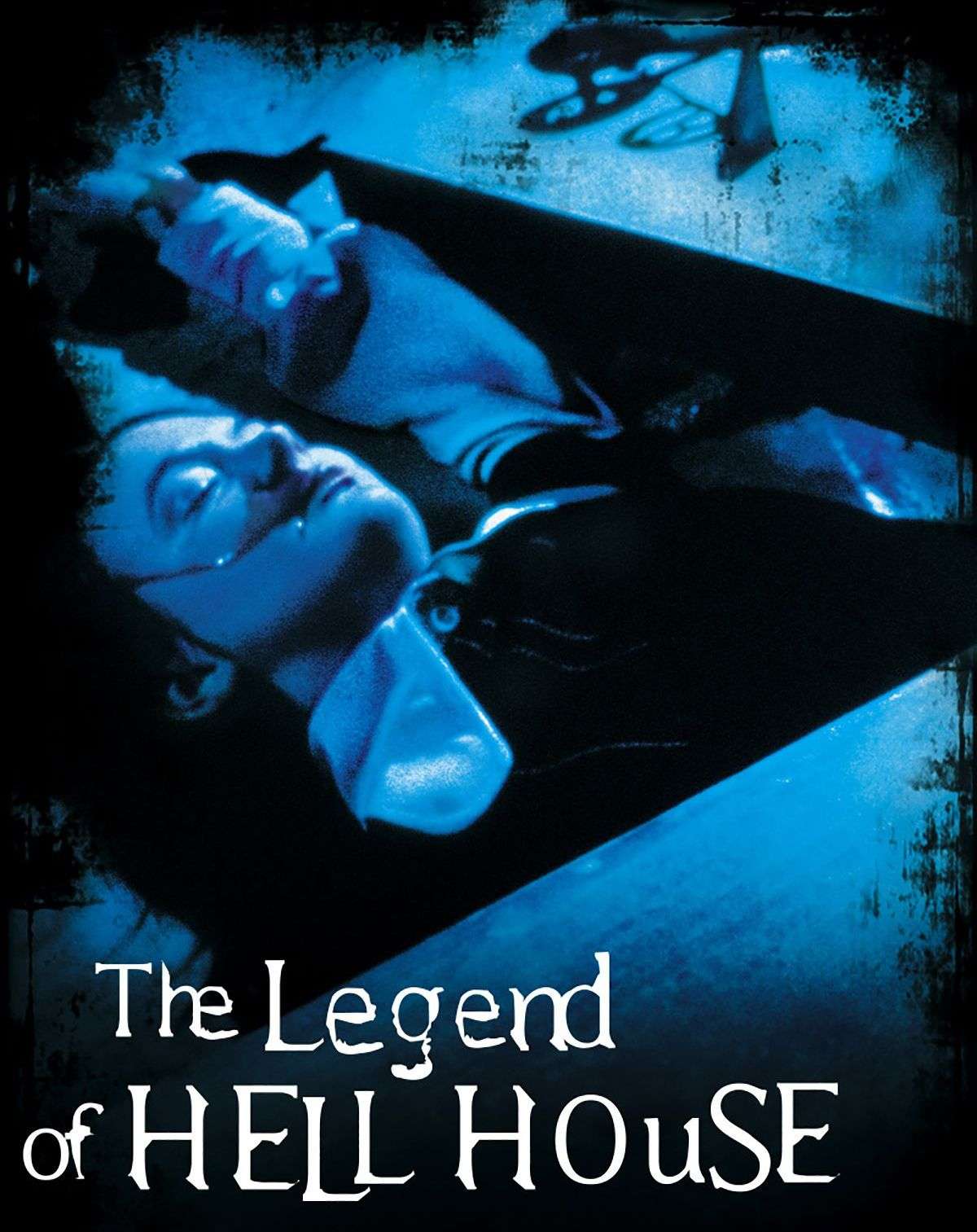
This supernatural horror, directed by John Hough, follows a group of people on a mission to investigate a haunted mansion despite strong clues telling them not to.
Dr. Lionel Barrett, a physicist, is hired by a wealthy to investigate the “Mount Everest of haunted houses,” and he brings his wife Anne and two mediums with him. Florence is a spiritual medium, whereas Ben is a physical medium and the sole survivor of a similar study of the house over two decades ago.
It is known to all that the previous owner of the house was a deranged and sadistic man named Belasco who carried out perverted murders inside, leaving the place haunted by many spirits of his victims.
Barrett, being a man of science, is convinced that the house has a focused electromagnetic energy which makes it seem haunted, and once they rid the house of this, things will go back to normal.
Barrett then beginsto noticethat he is the target of certain attempted attacks, and he blames Florence for forcing the house’s energies to act against him. Meanwhile, an indifferent Ben shuts his mind off to the house, for he only cares about getting paid.
Barrett’s wife Anne is also subjected to weird happenings, though her encounters seem a little different – she starts to have erotic dreams each time she is asleep and even attempts to seduce Ben while in a trance, before he is able to snap out of it.
In an attempt to help one of the spirits who they believe is the murderous owner’s son, Daniel, Florence allows the spirit to possess her, and Barrett assemblesa machine to rid the house of its electromagnetic energy.
This is useless, as the house’s demonic powers kill both Florence and Barrett, who become more hostile as the machine comes to life. Later, Ben and Anne discover that the house isn’t haunted by many spirits, but rather by the former owner’s spirit disguised as many. They find a hidden door in the chapel of the house and on entering, to their horror, see Belasco’s preserved body, sitting up right on a chair.
Cutting open his trousers, Ben and Anne find that in an attempt to appear taller and scarier, Belasco had amputated his own limbs and replaced them with prosthetics. He had also lined the room his body is preserved in with lead, foreshadowing the presence of electromagnetic energy in life after death.
Now that the room is wide open and Belasco’s body fully exposed, Ben and Anne activate Barrett’s machine and walk out of the house believing that they have led Belasco to the afterlife and freed the house of any spirits.
The film’s conclusion is clear, but some viewers were convinced that the machine did not operate, potentially paving the way for a sequel to The Legend of Hell House. However, we believe that a prequel would be far superior, detailing what happened when the investigators attempted to explore the house twenty years ago and how Ben was the only one to survive.
House (1977)
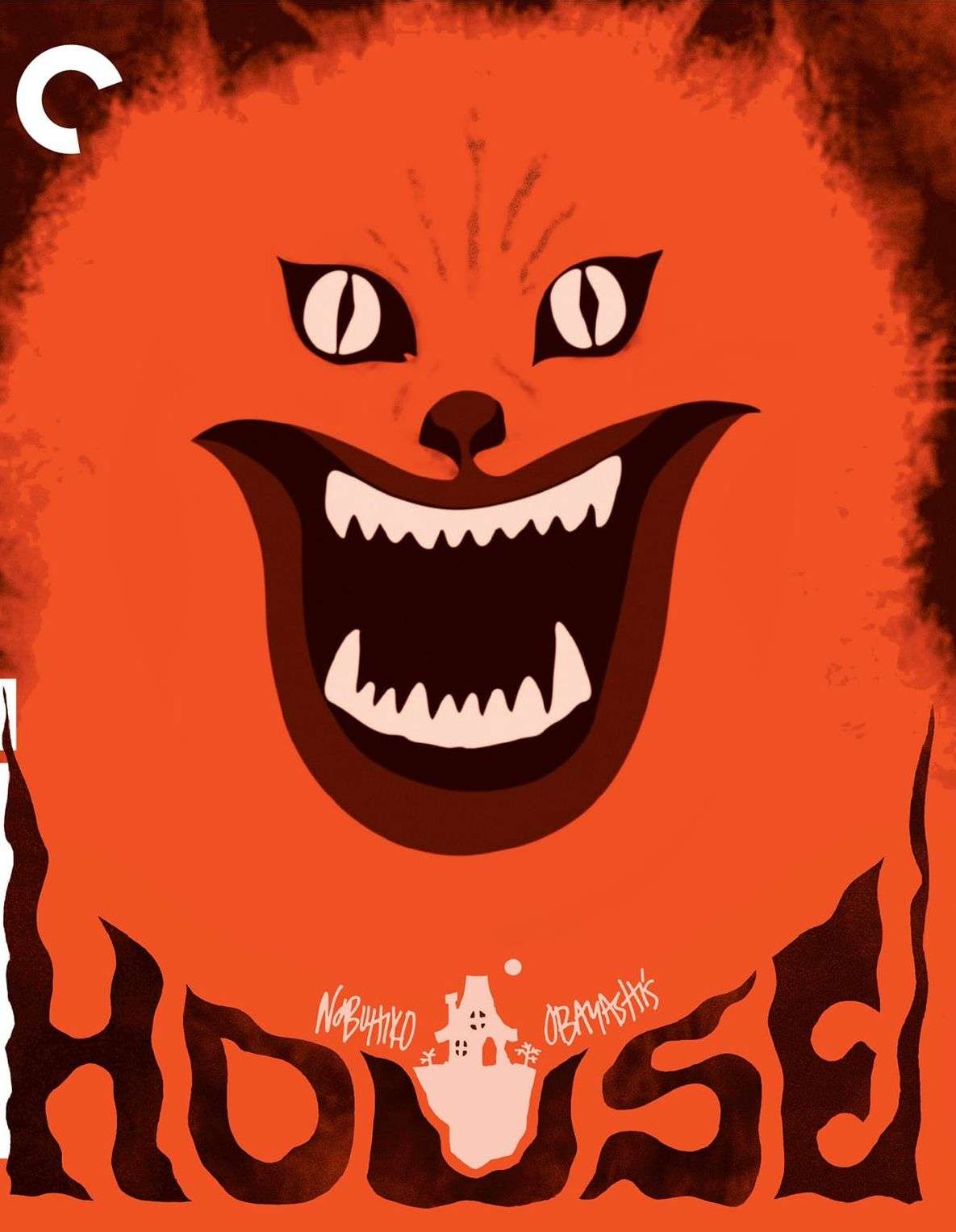
This picture received harsh criticism from critics, resulting in a box office flop, yet it made it onto our list owing to its later cult reputation. Nobuhiko Obayashi directed the horror comedy House.
Toho notoriously commissioned the director to make a satire of Steven Spielberg’s iconic Jaws, and Obayashi did not disappoint. Despite critics’ disapproval, the picture proved to be a fan favourite, using any and all kind of visual effects available at the time.
Perhaps the total ridiculousness of some portions of the picture was what made it so popular among the younger generation. A girl named Gorgeous because she is pretty, a boy named Mac because he likes to eat and someone named Melody because she likes music; this is the exact kind ofgenius that makes House what it is.
The film follows Gorgeous, who goes to live at her aunt’s house as she is upset about her father’s new marriage. Along with her, she takes her friends Prof (good at academia), Melody (good at music), Mac (good at eating), Kung Fu (good at sports), Sweet (cheery and bubbly) and Fantasy (loves to daydream).
When they reach the aunt’s house, they are unable to find her there and instead they encounter all sorts of supernatural beings. The group are then chased around by possessed objects, and bitten by the house, which is practically coming to life. The house has them running scared, until the children come across the aunt’s personal diary.
Although they never seem to get to the point of opening the diary, Gorgeous, who is possessed by the aunt’s spirit, tells them what is presumably written inside. Her aunt cursed her house when she died waiting for her lover to return.
Since then, the property has taken to enslaving and devouring any unmarried girls who arrive. The next morning, when her stepmother arrives, Gorgeous extends her hand to shake it with her own, and as soon as contact is made, the stepmother burns away to ashes.
Despite a straightforward plot about a haunted house, the film’s deliberate inconsistencies make for a weird watch, to say the least. The sole redeeming quality of the picture is that the audience can enjoy the ride, especially as the action unfolds and children begin to be eaten one by one.
There is no finale or “moral of the narrative” to give the story a satisfying conclusion.. Obayashi’s outlandish approach to the execution of this film makes it ambitious beyond its years and had they not been limited by the technology of their time the makers could probably have created something even more visually grand.
Tourist Trap (1979)
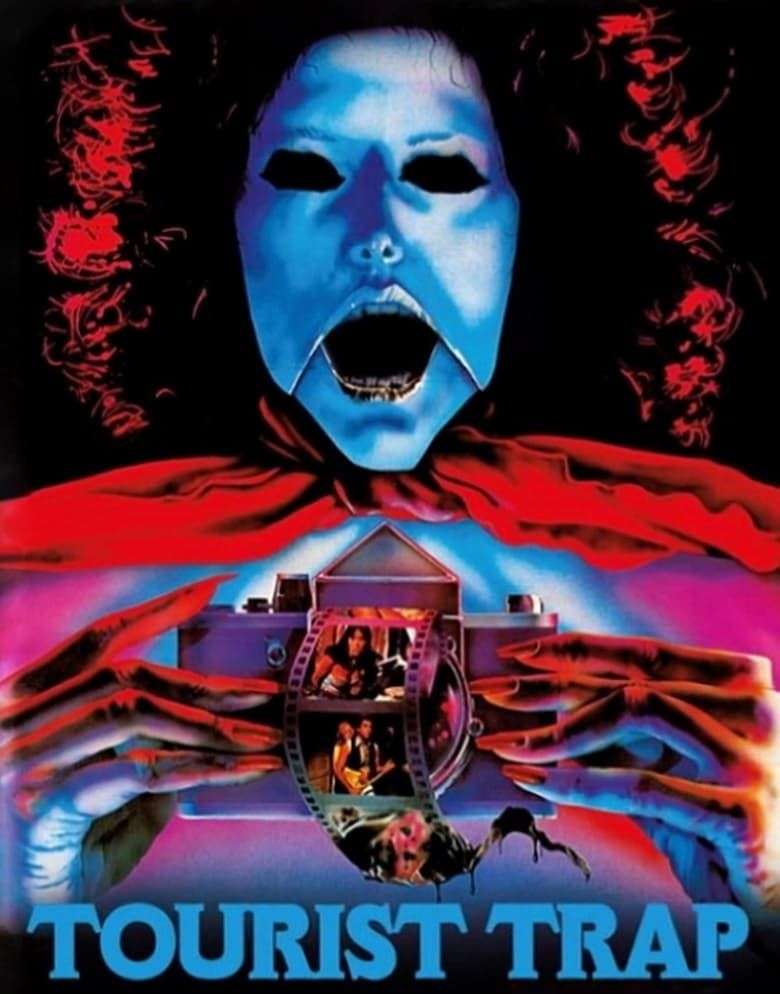
This eerie slasher flick, directed by David Schmoeller, is set in a roadside museum and is sure to give you the chills. When a group of teenagers come across it, they decide to go inside, despite all rationality. Schmoeller adds some dark comedy to bring out the flavour of the classic goth road trip, making it even more unforgettable.
We see heroine Eileen’s boyfriend get slain right at the start of the film when he is confined in the back room of a gas station when their car breaks down. While Eileen and the rest of the group continue to look for Woody, they come across a mysterious eccentric man with a shotgun named Mr Slausen .
Slausen offers to get them the parts they need to fix their vehicles.Jerry, the only remaining guy in the group, goes with Slausen to fix the car, the man insists the girls stay behind in the town museum, as it would be safer.
As one would expect, things start getting weird inside the museum as objects start flying about and the mannequins start to look creepier than before. Eileen is then choked to her death with the scarf she is wearing, though her friends think she has left to go look for Slausen and Jerry.
The film’s climax shows the friends Jerry, Becky and Molly all trapped in Slausen’s basement, with Jerry claiming the killer is Slausen’s brother Davey.
They witness a girl named Tina getting plastered and suffocating to death before she herself is turned into one of the mannequins, the way the Eileen was after her death. Becky realises that the “brother” is actually Slausen in disguise, murdering people and turning them into mannequins, and she is shortly slain by an Indian Chief figure.
As he tries to save Molly, Jerry is also transformed into a mannequin. Molly feels terrified when she sees Slausen dancing around with a mannequin of his dead wife and kills him with an axe in the heat of the moment. The film comes to an end as we see Molly, who has now become insane, driving away from the town surrounded by the mannequins of her friends.
A film with very similar locations, storyline and characters was released in 2005 titled House of Wax. This film also followed a group of friends that get stranded in a ghostown and end up getting killed in order to be turned into wax statues.
The killer is revealed to be the eccentric town guy who introduces himself as someone who can fix their car. Many fans assume House of Wax is a remake of Tourist Trap, despite the fact that the producers have not confirmed it.
The sole difference between the two is that House of Wax does not contain any supernatural elements; it is entirely the product of a human who has devolved into a psychotic killer. In Tourist Trap, both Slausen and the mannequins he creates have telekinetic powers.
The Manitou (1978)
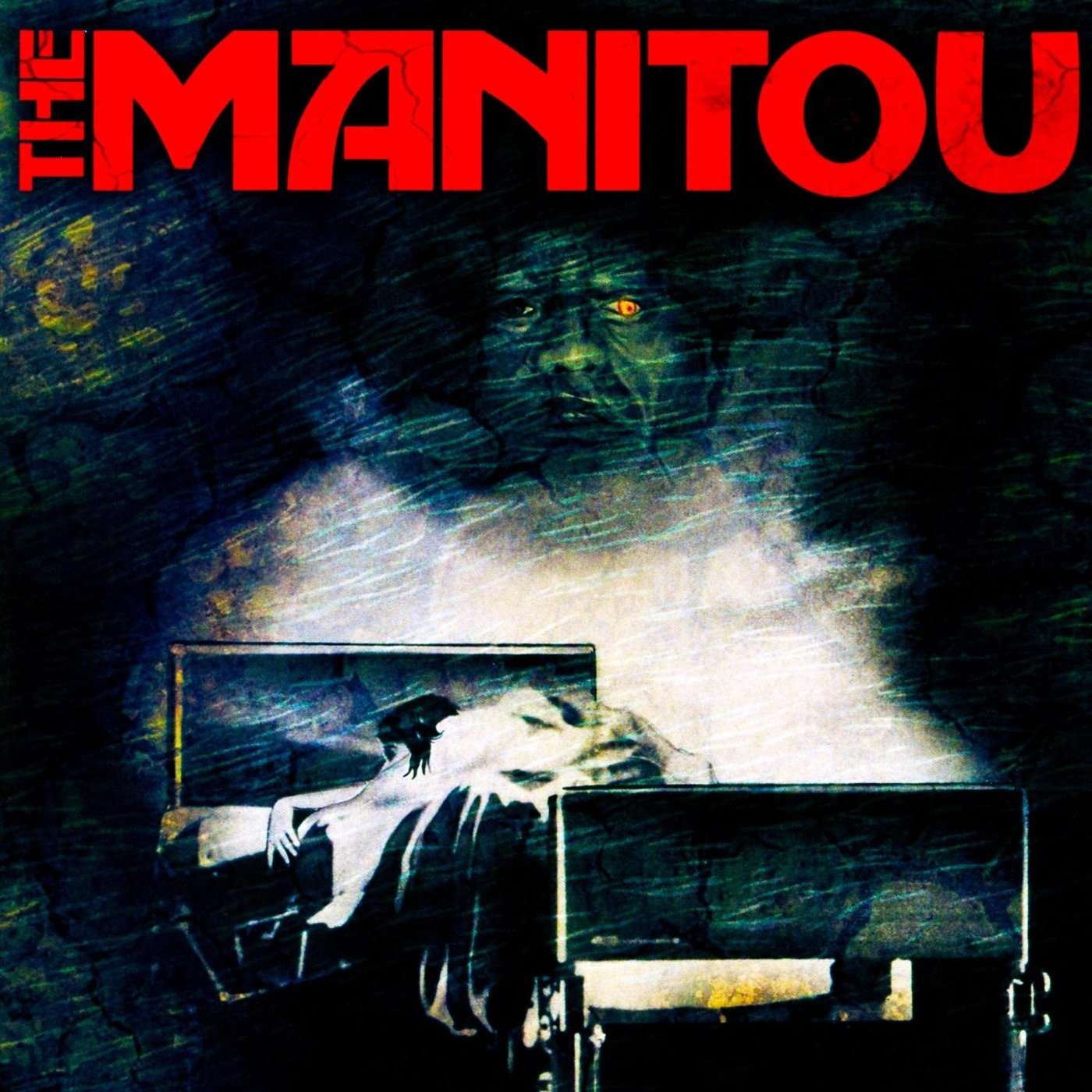
The Manitou, a body horror film directed by William Girdler, was based on a novel by Graham Masterton of the same name. The story is based on the Native American Manitou, a spiritual notion that they believed in, a life force that was omnipresent and could appear everywhere.
Karen is a young woman who goes to a hospital in San Francisco for treatment of a neck tumour. Doctors discover something strange after many tests and x-rays, indicating that a foetus is growing inside her tumour.
After having multiple tests and x-rays, the doctors find something bizarre, claiming that there is a foetus growing inside her tumour. Perplexed by this weird discovery, the doctors start running more tests on the growth, butthefoetus perceives the x-rays used on it as a threat.
As a result of this, its development is stunted and hence the abnomality tries to protect itself. It turns out that the creature is Misquamacus , an old Native American shaman who has been reincarnated.
The purpose of the reincarnation is solely vengeful, as he detests the white men who had forcefully entered and conquered America, stealing land from the Natives. Once Karen discovers this, she asks her boyfriend Harry for help.
A psychic fortune teller, Harry believes the best thing to do would be to contact another shaman. He asks a man named John to help them fight this reincarnation and save Karen.
The spirits that John is able to summon prove too weak to fight the Manitou and hence they realize that they can only try and send him back to where he came from. They perform ritual after ritual to help Karen, but all fails and Misquamacus summons the spirit of the Great Old One to destroy mankind.
According to Native American mythology, the Great Old One is as evil as Satan himself, so Harry and John do everything they can to keep it at bay. When everything else fails, the spirits John recruited to assist Karen will utilise her as a channel to concentrate all of their forces at once and defeat the Great Old One and the Manitou.
The film ends with John giving a stern reminder to Harry that although Misquamacus’ body is gone, his spirit still lives.
The Manitou may not fall into the category of biblical horror because it does not tackle the religion of Christianity, but the themes it uses are very similar to that of a biblical horror. The film is also interesting because of the insight given into the Native American culture and theology, and the piece evokes some serious questions about the way their land was snatched away from them.
The Shout (1978)
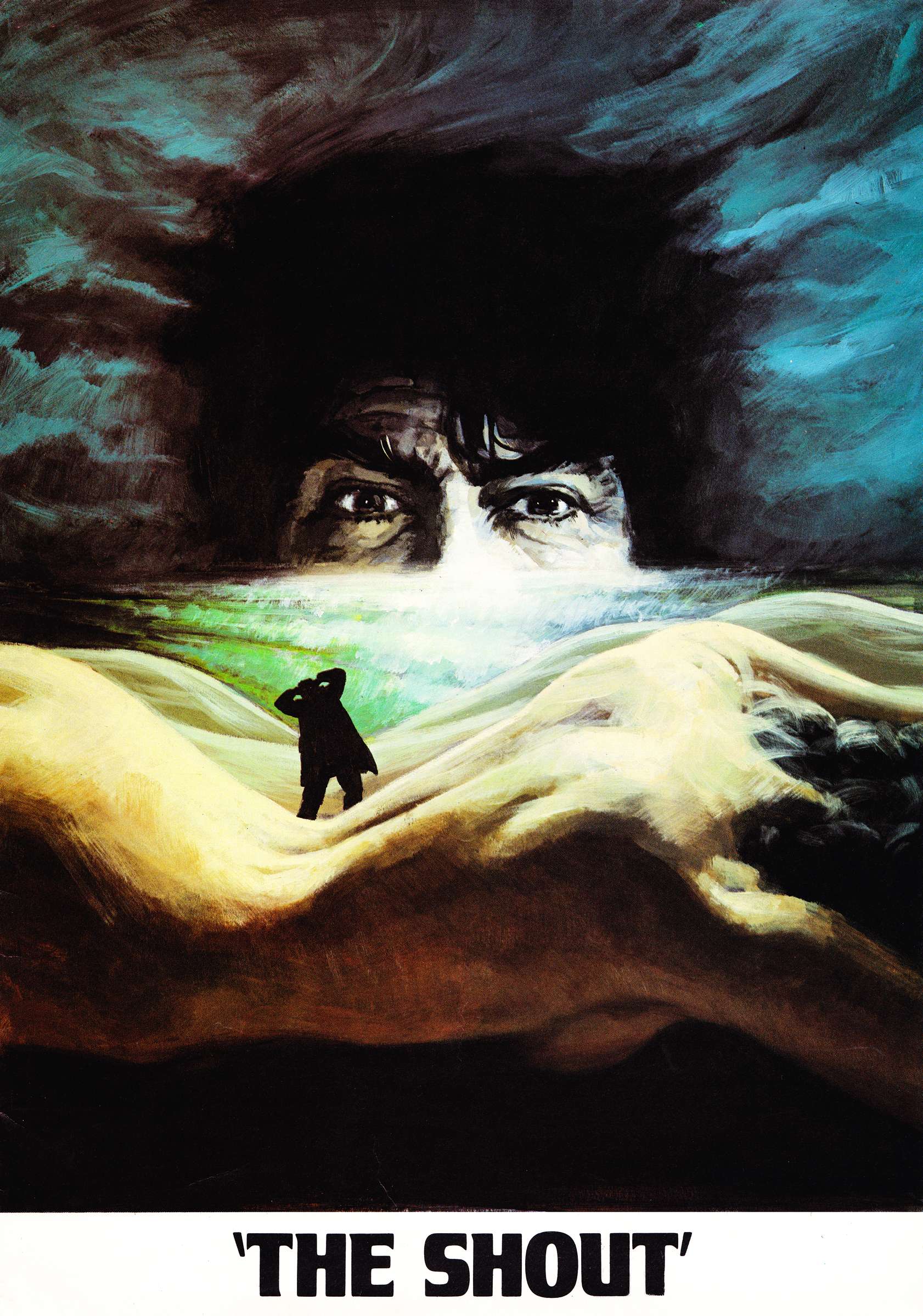
The Shout, directed by Jerzy Skolimowski and based on Robert Graves’ short tale of the same name, is another British horror film on our list. Because of its genre, this picture is the most unusual on the list.
Because it is a sound horror film, the director had to rely heavily on cutting-edge noise technology to terrify the viewer. Some may argue that it was a success, declaring it to be the scariest sound horror to date. Because of the bloodcurdling sound design he produced, much of the credit for this goes to the film’s sound director Alan Bell.
The film is shown in retrospect as we see two patients of a mental asylum chatting during a cricket match. They talk about a village couple,Anthony and Rachel, as they are visited by a shaman magician named Crossley (who is the patient narrating the story).
Fascinated by his aboriginal magic skills, the couple ask him what more he can do. Crossley tells them that he has the ability to create a “shout” that could be fatal, which peaks the couple’s curiosity further. As the film progresses, Crossleygets increasingly close to Rachel while Anthony is distanced from her both emotionally and physically.
Finally, it is time for Crossley to demonstrate his deadly “shout” and he chooses Anthony as his guinea pig. The film unfolds in slow motion as Crossley walks the couple out to sand dunes in the middle of nowhere in order to find the perfect safe place for his exhibition.
He tells Anthony to cover his ears only once the shout has begun. When Crossley finally lets out the shout, the scene is extended so that the audience is so engrossed in thesound,they may worry about falling victim to it themselves. It is unusually loud, though expected, and filled Anthony and Rachel with utmost fear.
They notice that the sheep in the area who were exposed when the shout was heard have all died in the sand, confirming that Crossley was not lying. The yell should have relieved the tension, dispersing the desolate sense of impending doom that Crossley had brought into Rachel and Anthony’s lives, but this is not the case. Skolimowski’s film’s charm lies in the fact that the mood becomes more grim and real.
